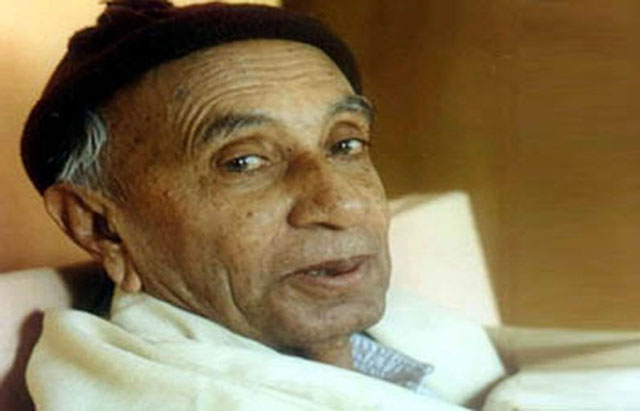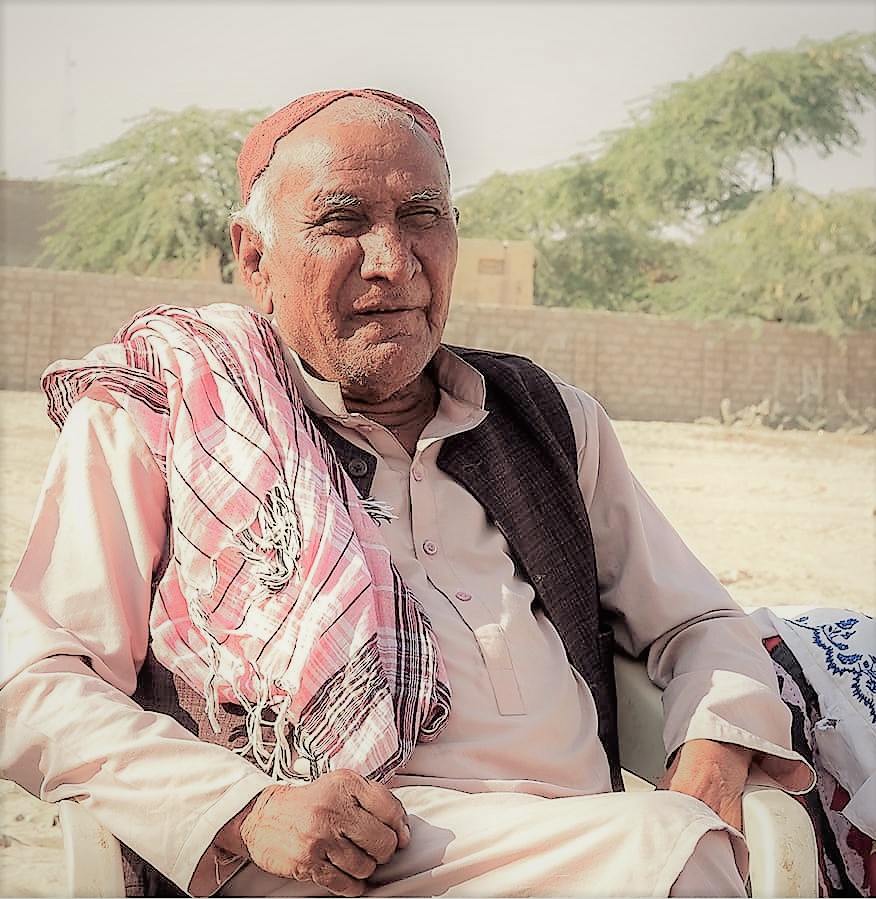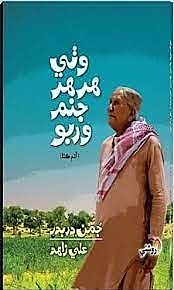
GM Syed considered Poet Juman Darbadar as his teacher
‘Juman Darbadar taught me ‘good news has to come’ – G. M. Syed
[Author’s Note: Will and Ariel Durant’s book – The Story of Civilization’s first volume appeared in 1935 and a complete set of eleven volumes was published in 1975. The authors took more than four decades to complete the manuscript. The readers well received the book. Therefore, their presence was sought in radio shows and press briefings. Will Durant has mentioned in one of his interviews that most common question around the globe was: ‘what is most important in human civilization, Intelligence, health or character? Will Durant responded the question that first comes the character, then health, and in the last – intelligence. I believe so, and it is still relevant in all walks of life.
I am of the view that in Sindh’s politics Mr. GM Syed, the nationalist leader and founder of Jeay Sindh Movement, was the powerhouse of ideas, and torchbearer of morality. Let me not shy, and state that he was the only politician, who practiced his ethos across the board, irrespective of political differences, power, age, class, and gender. I had been pondering over to document Jeay Sindh workers’ personal encounters with GM Syed. The present note has been translated from recently published autobiography of Juman ‘Darbadar’. Darbadar, a poet, folk singer, dramatist, dwelling in Thar Desert, who was also an active member of Jeay Sindh Movement, narrated his memoirs to Ali Zahid Abbasi, who edited and transcribed it. This is 9th article of this series.]
By Dr. Zaffar Junejo
All of us, who were active in 1980s politics, must be acquainted with Paulo Freire’s name. He was Brazilian educationist, his educational-cum-political approach made him popular among Asian and African political groups. But, here in Sindh, we must thank, Muhammad Ibrahim Joyo, who translated his book ‘Pedagogy of the Oppressed’ into Sindhi language with a text-representative title ‘Ilem Tadress Mazloman Lae’. Quickly, the book became ‘must read’ among all study circles – nationalists, progressives, and socialists. Among so many, innovative ideas, the book introduced ‘two-way-learning-approach: teacher could also learn from the student. It opposed the ‘banking-method-approach: teachers are fountain of learning; they pour knowledge into students’ empty minds.
Sadly, in progressive-groups and leftist-parties that approach was part of their political as well as organizational culture. The workers were conditioned in a way that they remained submissive, and believed that their seniors knew more than them. In addition to that tradition of secrecy and multiple-layered organizational culture also promoted one-man show, and discouraged disagreements, alternative ideas and thinking differently.
However, GM Syed believed in dialogue, which provided a window to him to learn from the juniors.

In this context, Juman Darbadar has mentioned one anecdote in his autobiography. He states that in 1983, he was regular visitor to poet Haleem Baghi, who lived in one of Sindh University hostels. Baghi was a popular poet among students who symbolized ‘Sindh University’, ‘Jamshoro’, and ‘Revolution’ in his poetry. Baghi’s roommate was Ahsan Memon, who also became his friend. One day Juman arrived there to be their guest, and next day unexpectedly Ahsan Memon was killed by the security forces. The murder made him too sad. The deep sadness came out in catharsis, and it took the form of poetry:
Wathi Har Har Janum Warbo, Mitha Mehran Mein Milbo
Khatam U’ndh Thi Wendi, Chiti Channdan Mein Milbo.
[(We) will return taking birth again and again to meet at mighty Indus, O’ Sweet Heart!
The dusk will fade away, and shall see you in shinny moonlight.]
After a few days, he went to see Saeen G. M. Syed. According to him, G. M. Syed asked him about his new poetry, if he has written. Immediately, he sang his newly composed poem. Its second stanza was:
Pahenji Ja Jang Aa Jari, Sa Thendi Neth Sobhari
Mari Wenda Sabhae Mari, Sachi Surhan Mein Milbo
[The continuous war we have waged, surely shall be won
All exploiters are to die; shall meet (you) in true fragrance.]
He mentioned that when he recited another stanza:
Huje Europe Ya Lebanon, Jite Mario Wayo Insan
Inhe Mannho Sandhe Arman, Aein Ratt Chhann Mein Milbo
[Wherever it might be, Europe or Lebanon, where human being are murdered
(We) we uphold that men’s dream, and meet in the carnage.]
He mentions that in the middle of singing, Saeen G. M. Syed wept, the tears made his cheeks wet, and he became silent. He broke the silence after roughly thirty minutes, and spoke about the philosophy of ‘Bisharat – good news’, that is to be bestowed upon shepherds, peasants or noble men, and till now it continues.

According to Juman, Saeen G. M. Syed said to him: ‘The poem has pulled me up from a deep well of disappointment, and I believe that even in my absence, people would realize the dream, and Sindh would be free’.
“Saeen G. M. Syed said to me – now onwards, you are my teacher, because you have rescued me from abysmal discontent,” Juman recalled and added that ‘Saeen’s words electrified him, and then and there he started crying like a child’.
He concluded that ‘afterwards in all gatherings, Saeen G. M. Syed repeatedly addressed him as his teacher, and told everyone that this Thario, a desert man, has taught him that ‘Bhisharat’ – good news has to come, and someone would realize it.’
[author title=”Dr. Zaffar Junejo” image=”https://sindhcourier.com/wp-content/uploads/2021/11/Dr.-Zaffar-Junejo-Sindh-Courier.jpg”]Dr. Zaffar Junejo has a Ph.D. in History from the University of Malaya. He is freelance writer and his areas of interest are post-colonial history, social history and peasants’ history.[/author]
Click here for Part-I, Part-II, Part-III, Part-IV , Part-V, Part-VI,